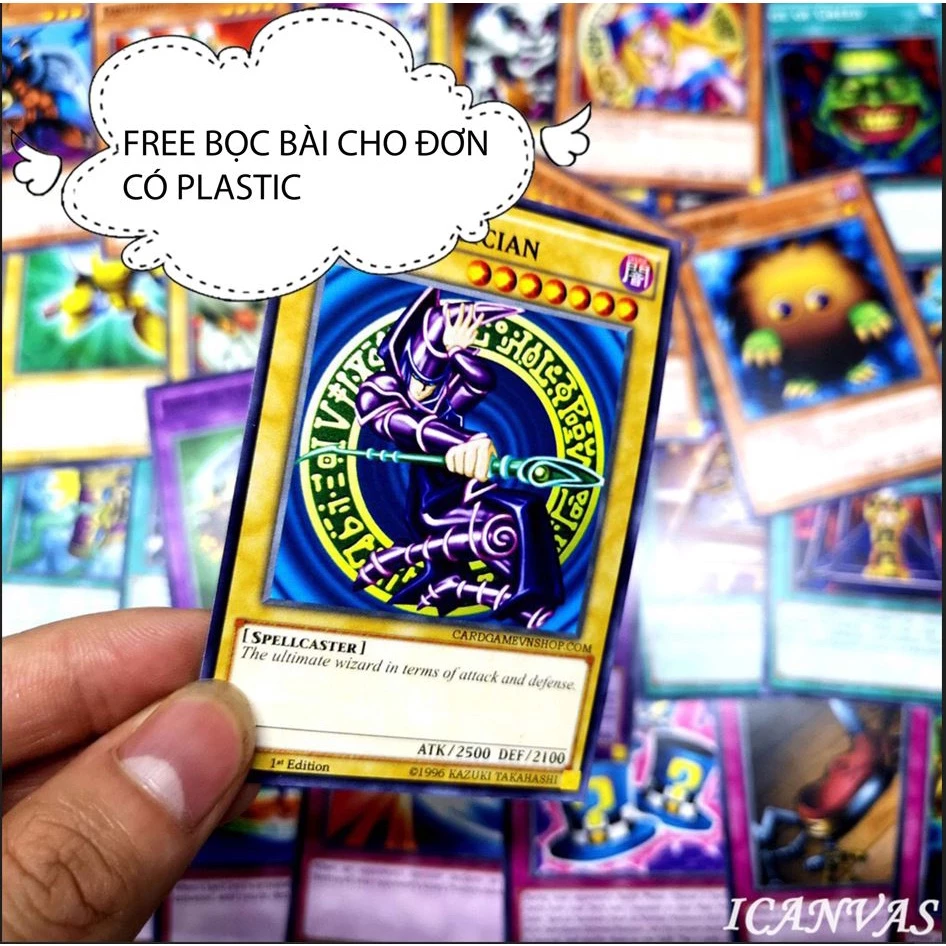Nhóm ngôn ngữ Athabasca
Nhóm ngôn ngữ Athabaska
| |
|---|---|
| Dene | |
| Phân bố địa lý | Tây Bắc Mỹ |
| Phân loại ngôn ngữ học | Dené-Enisei?
|
| Ngữ ngành con | |
| ISO 639-2 / 5: | ath |
| Glottolog: | atha1247[1] |
 Phân bố địa lý của nhóm ngôn ngữ Athabaska | |
Nhóm ngôn ngữ Athabaska (cũng viết là Athabasca, Athapaska hoặc Athapasca, và còn được gọi là nhóm ngôn ngữ Dené) là một nhóm ngôn ngữ bản địa lớn ở Bắc Mỹ, hiện diện ở mạn tây Bắc Mỹ, bao gồm ba phân nhóm ngôn ngữ: Bắc, Bờ biển Thái Bình Dương và Nam (còn gọi là Apache). Kari và Potter 2010:10 cho rằng toàn bộ khu vực nơi 53 ngôn ngữ Athabaska được nói rộng 4.022.000 kilômét vuông (1.553.000 dặm vuông Anh).
Tiếng Chipewyan là ngôn ngữ bản địa Bắc Mỹ có diện tích vùng nói rộng nhất, trong khi tiếng Navajo là ngôn ngữ bản địa có số người nói lớn nhất trong khu vực nằm về phía bắc México.
Mặc dù thuật ngữ Athabaska phổ biến trong ngôn ngữ học và nhân chủng học, thuật ngữ Dené và nhóm ngôn ngữ Dené (Dené là tên tự gọi của người bản ngữ) đang ngày một phổ biến hơn.[cần dẫn nguồn] Ví dụ, sau một bước tiến của những người tham dự vào năm 2012, Hội nghị Ngôn ngữ Athabaska hàng năm đã đổi tên thành Hội nghị Ngôn ngữ Dené.[cần dẫn nguồn]
Từ nguyên
[sửa | sửa mã nguồn]Từ Athabaska là một dạng Anh hóa của tên hồ Athabasca trong tiếng Cree (Bản mẫu:Lang-crm "[nơi] đầy lau sậy") ở Canada. Tiếng Cree là một ngôn ngữ Algonquin, không phải là ngôn ngữ Athabaska.[2] Tên này được Albert Gallatin đặt ra trong phân loại năm 1836 (viết năm 1826) về các ngôn ngữ của Bắc Mỹ. Ông thừa nhận rằng đó là lựa chọn tự ý của mình khi sử dụng tên này cho nhóm ngôn ngữ này và các dân tộc liên quan, viết:
Tôi đã đặt cho họ [các tộc Dené] cái danh ngẫu ý Athabasca [này], bắt nguồn từ tên gốc của hồ [hồ Athabasca].
— Albert Gallatin, 1836:116–7
Bốn cách viết "Athabaska", "Athabasca", "Athapaska" và "Athapasca" có mức sử dụng gần như ngang nhau. Mỗi cộng đồng có thể chọn một trong các cách viết này (Krauss 1987). Ví dụ, Hội nghị Tộc trưởng Tanana và Trung tâm ngôn ngữ bản địa Alaska thường viết "Athabasca". Ethnologue sử dụng "Athapaska" trong việc đặt tên nhóm ngôn ngữ và các ngôn ngữ thành viên.[3]
Ngôn ngữ
[sửa | sửa mã nguồn]Các nhà ngôn ngữ học thường chia nhóm Athabaska thành ba nhóm con, dựa trên phân bố địa lý:
- Nhóm ngôn ngữ Athabaska miền Bắc
- Nhóm ngôn ngữ Athabaska Bờ biển Thái Bình Dương
- Nhóm ngôn ngữ Athabaska miền Nam hoặc "Apache"
32 ngôn ngữ Athabaska Bắc được sử dụng trên khắp vùng nội địa Alaska và vùng nội địa tây bắc Canada (ở Yukon và Các Lãnh thổ Tây Bắc), cũng như các tỉnh British Columbia, Alberta, Saskatchewan và Manitoba. Năm ngôn ngữ Athabaska là ngôn ngữ chính thức ở Lãnh thổ Tây Bắc, bao gồm tiếng Chipewyan (Dënesųłıné), tiếng Dogrib hoặc Tłı̨chǫ Yatıì, tiếng Gwich’in (Kutchin, Loucheux) và các biến thể Bắc và Nam của tiếng Slavey.
Bảy (hoặc nhiều hơn) ngôn ngữ Athabaska Bờ biển Thái Bình Dương được nói ở Tây Bắc Thái Bình Dương ở Hoa Kỳ. Chúng bao gồm Applegate, Galice, một số ngôn ngữ khu vực sông Rogue, Thượng Coquille, Tolowa và Thượng Umpqua ở Oregon; Sông Eel, Hupa, Sông Mattole-Bear và Tolowa ở mạn bắc California; và có thể Kwalhioqua-Clatskanie ở Washington.
Bảy ngôn ngữ Athabaska Nam có vị trí địa lý xa cách đáng kể so với hai nhóm Bờ biển Thái Bình Dương và nhóm Bắc. Sự cách biệt địa lý này phản ảnh lịch sử di cư và ngày nay được một số tộc thổ dân ở vùng Tây Nam Hoa Kỳ và tây bắc México nói. Nhóm này bao gồm tiếng Navajo cùng sáu ngôn ngữ Athabaska Nam khác.
Tuy nhiên, với phân loại truyền thống này, phải nhớ rằng nó chủ yếu dựa trên sự tương đồng về địa lý/khu vực hơn là mối quan hệ phả hệ ngôn ngữ; chỉ có các ngôn ngữ Athapaska Nam (còn gọi là Apache) tạo thành một đơn vị phả hệ khắng khít. (Người nói các ngôn ngữ có mối quan hệ với nhau không nhất thiết phải liên quan nhau về dân tộc học (về mặt sinh học).)
Tham khảo
[sửa | sửa mã nguồn]- ^ Nordhoff, Sebastian; Hammarström, Harald; Forkel, Robert; Haspelmath, Martin biên tập (2013). “Athabaskan”. Glottolog. Leipzig: Max Planck Institute for Evolutionary Anthropology.
- ^ Bright, William (2004). Native American Place Names of the United States. Norman: University of Oklahoma Press, pg. 52
- ^ Ethnologue: Language Family Trees – Athapaskan
Tài liệu
[sửa | sửa mã nguồn]- Boas, Franz. 1917. Grammatical notes on the language of the Tlingit Indians. (University Museum Anthropological Publications 8.1). Philadelphia: University of Pennsylvania.
- California Indian Library Collections Project. California Athapaskan Bibliography
- Campbell, Lyle. 1997. American Indian languages: The historical linguistics of Native America. New York: Oxford University Press. ISBN 0-19-509427-1.
- Cook, Eung-Do. 1981. Athabaskan linguistics: Proto-Athapaskan phonology. Annual Review of Anthropology 10. 253–273.
- Cook, Eung-Do. 1992. Athabaskan languages. In William Bright (ed.), International encyclopedia of linguistics, 122–128. Oxford: Oxford University Press. ISBN 0-19-505196-3.
- Cook, Eung-Do & Keren Rice. 1989. Introduction. In Eung-Do Cook & Keren Rice (eds.), Athapaskan linguistics: Current perspectives on a language family, 1–61. (Trends in Linguistics, State-of-the-art Reports 15). Berlin: Mouton de Gruyter. ISBN 0-89925-282-6.
- Golla, Victor. 2011. California Indian Ianguages. Berkeley: University of California Press.
- Hoijer, Harry. 1938. The southern Athapaskan languages. American Anthropologist 40(1). 75–87.
- Hoijer, Harry. 1956. The Chronology of the Athapaskan languages. International Journal of American Linguistics 22(4). 219–232.
- Hoijer, Harry. 1963. The Athapaskan languages. In Harry Hoijer (ed.), Studies in the Athapaskan languages, 1–29. Berkeley: University of California Press.
- Hoijer, Harry (ed.). 1963. Studies in the Athapaskan languages. (University of California publications in linguistics 29). Berkeley: University of California Press.
- Hoijer, Harry. 1971. The position of the Apachean languages in the Athpaskan stock. In Keith H. Basso & M. E. Opler (eds.), Apachean culture history and ethnology, 3–6. (Anthropological papers of the University of Arizona 21). Tucson: University of Arizona Press.
- Hymes, Dell H. 1957. A note on Athapaskan glottochronology. International Journal of American Linguistics 23(4). 291–297.
- Kari, James. 1989. Affix positions and zones in the Athapaskan verb complex: Ahtna and Navajo. International Journal of American Linguistics 55(4). 424-454.
- Kari, James. 1996. A Preliminary View of Hydronymic Districts in Northern Athabaskan Prehistory. Names 44:253-271.
- Kari, James. 2010. The concept of geolinguistic conservatism in Na-Dene prehistory. In The Dene–Yeniseian Connection. (Anthropological Papers of the University of Alaska). Vol. 5, new series. pp. 194–222.
- Kari, James, James A. Fall, & Shem Pete. 2003. Shem Pete's Alaska: The territory of the Upper Cook Inlet Denaʼina. Fairbanks, AK: University of Alaska Press. ISBN 1-889963-56-9 (cloth); ISBN 1-889963-57-7 (pbk.).
- Kari, James and Ben A. Potter. (2010). The Dene–Yeniseian Connection, ed. by J. Kari and B. Potter, 1–24. (Anthropological Papers of the University of Alaska), new series, vol. 5. Fairbanks: University of Alaska Fairbanks, Department of Anthropology.
- Kari, James and Ben A. Potter. (2010). The Dene-Yeniseian Connection: Bridging Asian and North America. In The Dene–Yeniseian Connection, ed. by J. Kari and B. Potter, 1–24. (Anthropological Papers of the University of Alaska), new series, vol. 5. Fairbanks: University of Alaska Fairbanks, Department of Anthropology, pp. 1–24.
- Kibrik, Andrej A. 1993. "Transitivity increase in Athabaskan languages". In Bernard Comrie & Maria Polinsky (eds.), Causatives and Transitivity, 47–68. (Studies in Language Comparison Series 23.) Philadelphia: John Benjamins. ISBN 978-1-55619-375-0 (hbk).
- Kibrik, Andrej A. 1996. "Transitivity decrease in Navajo and Athabaskan: Actor-affecting propositional derivations". In Eloise Jelinek, Sally Midgette, Keren Rice, & Leslie Saxon (eds.) Athabaskan language studies: Essays in honor of Robert W. Young, 259–304. Albuquerque: University of New Mexico. ISBN 0-8263-1705-7 (cloth).
- Kibrik, Andrej A. 2001. "A typologically oriented portrait of the Athabaskan language family". Presented at ALT-IV, Santa Barbara, CA.
- Krauss, Michael E. 1964. "The proto-Athapaskan–Eyak and the problem of Na-Dene, I: The phonology". International Journal of American Linguistics 30(2). 118–131.
- Krauss, Michael E. 1965. "The proto-Athapaskan–Eyak and the problem of Na-Dene, II: The morphology". International Journal of American Linguistics 31(1). 18–28.
- Krauss, Michael E. 1968. "Noun-classification systems in the Athapaskan, Eyak, Tlingit and Haida verbs". International Journal of American Linguistics 34(3). 194–203.
- Krauss, Michael E. 1969. On the classification in the Athapascan, Eyak, and the Tlingit verb. Baltimore: Waverly Press, Indiana University.
- Krauss, Michael E. 1973. Na-Dene. In Thomas A. Sebeok (ed.), Linguistics in North America, 903–978. (Current trends in linguistics 1.) The Hague: Mouton. (Reprinted as Krauss 1976.)
- Krauss, Michael E. 1976a." Na-Dene". In Thomas A. Sebeok (ed.), Native languages of the Americas, 283–358. New York: Plenum. Reprint of Krauss 1973.
- Krauss, Michael E. 1976b. Proto-Athabaskan–Eyak fricatives and the first person singular. Unpublished manuscript.
- Krauss, Michael E. 1979. "Na-Dene and Eskimo". In Lyle Campbell & Marianne Mithun (eds.), The languages of native America: Historical and comparative assessment. Austin: University of Texas Press.
- Krauss, Michael E. 1979. Athabaskan tone. Unpublished manuscript. Published with revisions as Krauss 2005.
- Krauss, Michael E. 1981. On the history and use of comparative Athapaskan linguistics. Unpublished manuscript.
- Krauss, Michael E. 1986. "Edward Sapir and Athabaskan linguistics". In W. Cowan, M. Foster, & K. Koerner (eds.), New perspectives in language, culture, and personality, 147–190. Amsterdam: Benjamins.
- Krauss, Michael E. 1987. The name Athabaskan. In Peter L. Corey (ed.), Faces, Voices & Dreams: A celebration of the centennial of the Sheldon Jackson Museum, Sitka, Alaska, 1888–1988, 105–08. Sitka, AK: Division of Alaska State Museums and the Friends of the Alaska State Museum. PDF version available from the Alaska Native Language Center.
- Krauss, Michael E. 2005. Athabaskan tone. In Sharon Hargus & Keren Rice (eds.), Athabaskan Prosody, 51–136. Amsterdam: John Benjamins. Revision of unpublished manuscript dated 1979.
- Krauss, Michael E. & Victor Golla. 1981. Northern Athapaskan languages. In J. Helm (ed.), Subarctic, 67–85. (Handbook of North American Indians 6). Washington, DC: Smithsonian Institution.
- Krauss, Michael E. & Jeff Leer. 1981. Athabaskan, Eyak, and Tlingit sonorants. (Alaska Native Language Center research papers 5). Fairbanks, AK: University of Alaska, Alaska Native Language Center.
- Leer, Jeff. 1979. Proto-Athabaskan verb stem variation I: Phonology. (Alaska Native Language Center research papers 1). Fairbanks, AK: Alaska Native Language Center.
- Leer, Jeff. 1982. Navajo and comparative Athabaskan stem list. Unpublished manuscript. ANLA CA965L1982
- Leer, Jeff. 1990. Tlingit: A portmanteau language family? In Philip Baldi (ed.), Linguistic change and reconstruction methodology, 73–98. (Trends in Linguistics: Studies and monographs 45). Berlin: Mouton de Gruyter. ISBN 978-3-11-011908-4.
- Leer, Jeff. 2005. How stress shapes the stem-suffix complex in Athabaskan. In Sharon Hargus & Keren Rice (eds.), Athabaskan Prosody, 278–318. Amsterdam: John Benjamins.
- Leer, Jeff. 2008. Recent advances in AET comparison. ANLA CA965L2008b
- Leer, Jeff. 2010. The Palatal Series in Athabascan-Eyak-Tlingit, with an Overview of the Basic Sound Correspondences. In The Dene–Yeniseian Connection, ed. by J. Kari and B. Potter, p. 168-193. Anthropological Papers of the University of Alaska, new series, vol. 5. Fairbanks: University of Alaska Fairbanks, Department of Anthropology.
- Mithun, Marianne. 1999. The languages of Native North America. Cambridge: Cambridge University Press. ISBN 0-521-23228-7 (hbk); ISBN 0-521-29875-X (pbk).
- Naish, Constance & Gillian Story. 1973. Tlingit verb dictionary. Fairbanks, AK: Alaska Native Language Center. ISBN 0-933769-25-3.
- Rice, Keren. 1997. "A reexamination of Proto-Athabaskan y". Anthropological Linguistics 39(3). 423–426.
- Rice, Keren. 2000. Morpheme order and semantic scope: Word formation in the Athapaskan verb. Cambridge: Cambridge University Press. ISBN 978-0-521-58354-1 (hbk); ISBN 978-0-521-02450-1 (pbk).
- Sapir, Edward. 1915. The Na-Dene languages, a preliminary report. American Anthropologist 17(3). 534–558.
- Sapir, Edward. 1916. Time perspective in aboriginal American culture: A study in method. (Anthropology series 13; Memoirs of the Canadian Geological Survey 90). Ottawa: Government Printing Bureau.
- Sapir, Edward. 1931. "The concept of phonetic law as tested in primitive languages by Leonard Bloomfield". In S. A. Rice (ed.), Methods in social science: A case book, 297–306. Chicago: University of Chicago Press.
- Sapir, Edward. 1936. Linguistic evidence suggestive of the northern origin of the Navaho. American Anthropologist 38(2). 224–235.
- Sapir, Edward, & Victor Golla. 2001. "Hupa Texts, with Notes and Lexicon". In Victor Golla & Sean O'Neill (eds.), Collected Works of Edward Sapir, vol. 14, Northwest California Linguistics, 19-1011. Berlin: Mouton de Gruyter.
- Saville-Troike, Muriel. 1985. On variable data and phonetic law: A case from Sapir's Athabaskan correspondences. International Journal of American Linguistics 51(4). 572–574.
- Sturtevant, William C. (ed.). 1978–present. Handbook of North American Indians, vols. 1–20. Washington, D.C.: Smithsonian Institution. Vols. 1–3, 16, 18–20 not yet published.
- Vajda, Edward. 2010. "A Siberian Link with Na-Dene Languages". In The Dene–Yeniseian Connection, ed. by J. Kari and B. Potter, 33–99. Anthropological Papers of the University of Alaska, new series, vol. 5. Fairbanks: University of Alaska Fairbanks, Department of Anthropology.
- Vajda, Edward J. (2011). Oxford Bibliographies Online: "Dene-Yeniseian" Lưu trữ 2017-10-11 tại Wayback Machine.
Liên kết ngoài
[sửa | sửa mã nguồn]- Athapascan Bibliography
- Athabaskan Satellites & ASL Ion-Morphs
- Alaska Native Language Center
- Yukon Native Language Center
- California Athapascan
- Don Macnaughtan. “Oregon Athapaskan Languages: Bibliography of the Athapaskan Languages of Oregon”. Truy cập ngày 30 tháng 5 năm 2018.
- ATHAPBASCKAN-L mailing list for Athabaskan linguistics
 GIẢM
22%
GIẢM
22%
 GIẢM
19%
GIẢM
19%
 GIẢM
24%
GIẢM
24%
 GIẢM
15%
GIẢM
15%
 GIẢM
25%
GIẢM
25%




